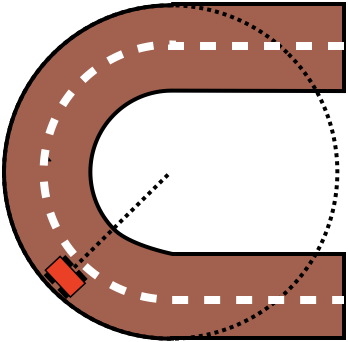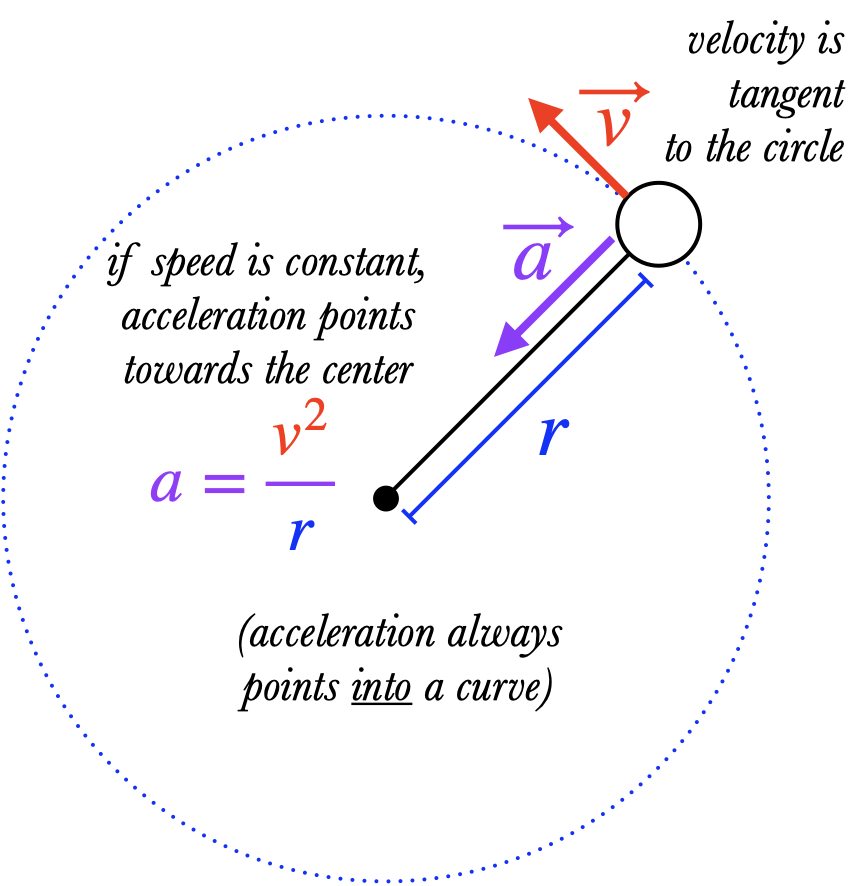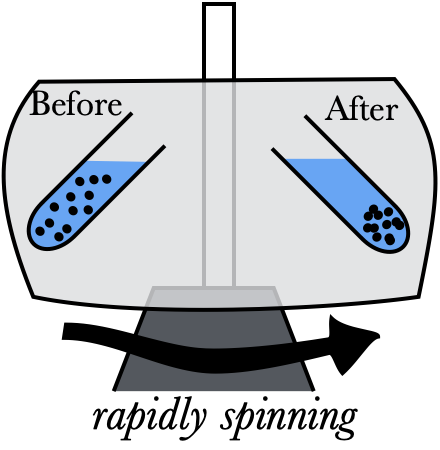Uniform Circular Motion
Note
Think of the word centripetal as being analogous to horizontal or vertical: it refers to a direction.The most famous example of a pseudoforce is when someone on a spinning merry-go-round feels pushed outward, away from the center. This is called the centrifugal pseudoforce, where centrifugal means "center-fleeing". Because a spinning merry-go-round is non-inertial (because it is constantly changing direction), this suggests that the rider is accelerating towards the center. We call this a centripetal acceleration, which means "center-seeking". 

If an object moves in a circle (or part of a circle, like the ends of a racetrack) with a constant speed, then its acceleration points directly at the center, and is always perpendicular to the velocity of the object. If the speed of the object is $v$ and the radius of the circle is $r$, then the acceleration is
Using proportionality, we can see that the acceleration (and thus the pseudoforce you feel if you're the one spinning) increases either when you increase the speed of rotation, or you reduce the radius (that is, by moving closer to the center).
If the object's speed is changing as it goes around the circle, then the acceleration doesn't point directly at the center; it points a little ahead of the center if speeding up and a little behind if it is slowing down. But the acceleration will always point into the circle, just as for any object which is going around a curve.
Footnote

The name pseudoforce may lead you to believe that the centrifugal force, for example, is "all in our heads", a property of human imagination. This is not true: the effect is real, even if the term "force" isn't exactly appropriate. For example, medical researchers use centrifuges all the time to separate components in blood and other fluids, forcing denser substances and particles to move to the outside of a beaker.